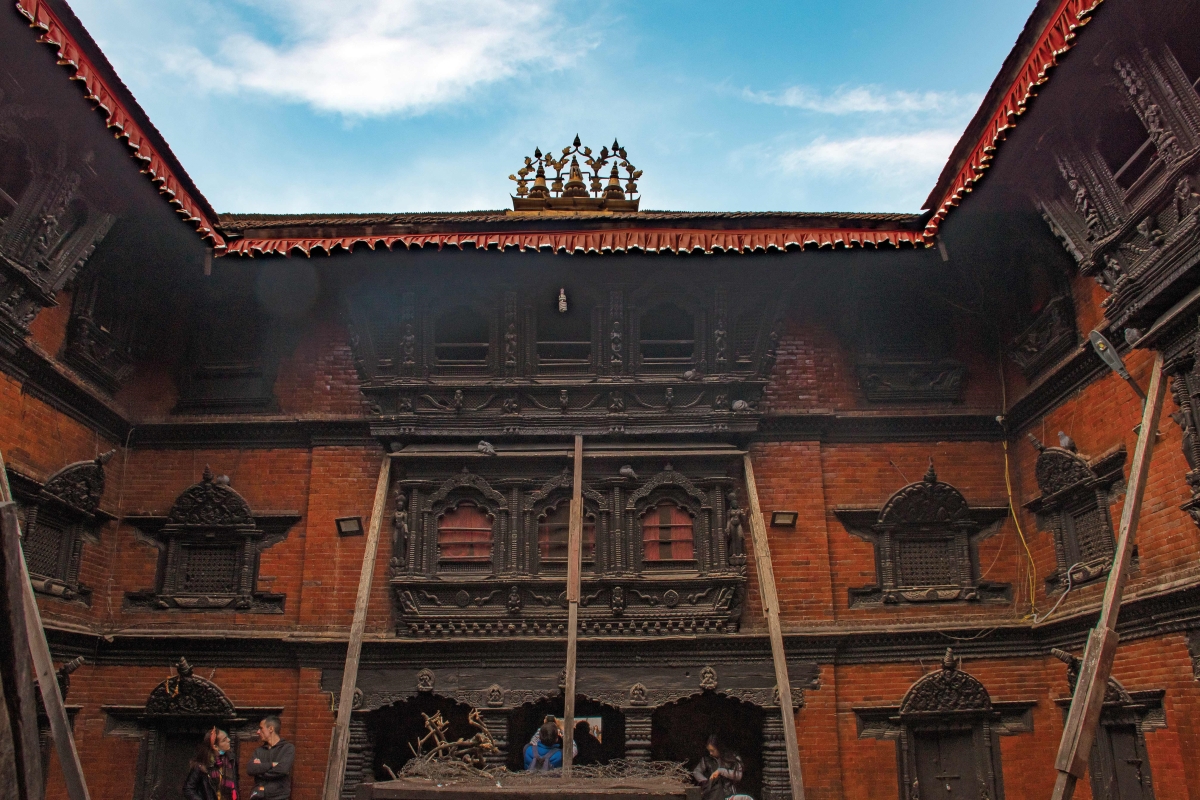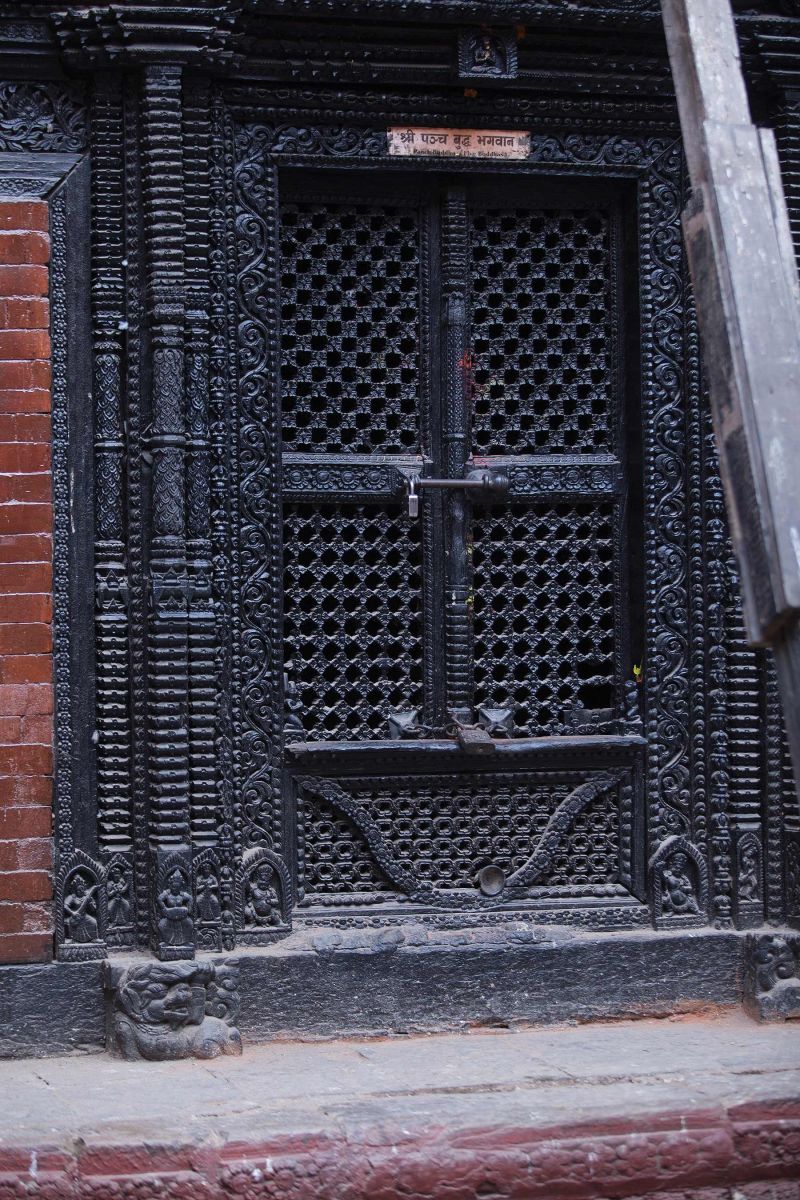Transition back to regular life wasn't easy for Preeti Shakya, a former Kumari. In that role, she was loved and revered, but the world outside the Kumari House wasn't as straightforward as she thought. However, she faced every challenge in a calm and courageous manner like she did as a Kumari.

It's late afternoon, the clock is about to strike 4 pm and people, mostly tourists are gathered at the courtyard of the Kumari House in Basantapur. The house is a 17th century brick building richly decorated with beautiful wooden carvings, home to the living goddess. It's very silent as everyone awaits the arrival of the Kumari, for what is a rare viewing. Like many people present there, I am very curious and have many questions in my mind. After a few minutes, someone emerges from the darkness; it's not the Kumari, but Gautam Shakya, one of the caretakers. He warns the people not to take photographs and yells at those pointing their cameras, as taking photos of the Kumari within the infrastructure is strictly forbidden. After a while she emerges from the window, a five year old with a stern look in her eyes, seen as a living embodiment of the Goddess Taleju herself. It's like someone suddenly walking into a dark room and switching on the lights. With a handful of exceptions, the crowd bows down to her; both believers and non-believers have succumbed to the legend of the living goddess.
The word Kumari is derived from the Sanskrit word Kaumarya which means princess. The word Kumari in Nepali means a young, unmarried virgin girl. The Kumari is also called Kumari Ma, the mother deity. A Kumari is generally selected at the age of 3 to 4 years and retires when her first menstruation begins as it is believed that the goddess vacates her body which is merely a vessel for the divine. The living goddess a day before becomes a mortal on the next. Once her time is up, she passes the torch to the next Kumari and leaves the Kumari House in a chariot after a grand farewell from the state.
Preeti Shakya, a former Kumari, doesn't remember many things from her life as a Kumari, but she recalls that she was very excited when she first entered the Kumari House. She became a Kumari when she was only three and a half years old. She danced in her beautiful red dress after entering the Kumari House, she sparkled like her jewelries. The dress moved with her, swishing silently around her legs.


Preeti was content spending most days by herself. Her parents visited her once a week and she left the house only 11 times a year during major festivals and events. In her time as a Kumari, she performed the duty of a wish-fulfilling deity. People believed she had the power to cure illness and bring happiness through her blessings. She also received gifts from devotees. She woke up early in the morning and after cleaning up she participated in two daily prayers with Hindu and Buddhist rituals. Then she met devotees after she had her lunch and then it was time for some home schooling. She had a busy schedule but whenever she had free time, Preeti liked dancing to the music on the radio.
"Being recognized by everybody was the best thing about being a Kumari." She fondly remembers festivals like Indra Jatra, Dashain and Tihar. She found the Kumari Jatra (procession) particularly exciting when she was carried on her golden chariot and made her way through the streets to the claps and cheers of thousands of devotees. Kumari Jatra is a three day chariot procession of the Kumari along with human manifestations of the gods Ganesh and Bhairav. It coincides with Indra Jatra and began during the reign of King Jaya Prakash Malla.
Preeti had to follow various customary procedures including her attire and ornaments. She was always dressed in red, because red is considered a sacred color of gods in Hinduism. On most days she wore Jama Cholo (traditional Nepali kilt-like garment wrapped around the waist and blouse) but she wore a special dress and ornaments during festivals and formal occasions, appearing in a red dress that went down to her feet, a red Chaubandi Cholo (traditional Nepali full sleeved blouse), and a red crown. Her forehead was painted with vermillion powder with yellow lines which signifies cosmic energy and she had a third eye called tri-netra painted on the middle of her forehead which is believed to destroy all the evil in the world. She wore different ornaments around her neck, among them the most significant ones being a gold chain in the shape of a serpent’s hands and feet and Navaratna Jari, a combination of nine gems that are recognized as sacred and royal. She also had a bracelet and gold rings. Once the Kumari retires, the ornaments are passed on to the next.
Transition back to regular life wasn't easy for Preeti. She became a Kumari in 2001 and remained so until 2008. After almost seven years as a Kumari, her time ended and she was sad. She didn't really want to go back to her home. Life was a struggle at the beginning of her mortal life, and interacting with people was harder than she had imagined as she was isolated and alienated from people throughout her time as a Kumari. She was a confused and anxious eleven year old who was frightened by loud sounds, and moving vehicles petrified her.
On the first day of school, everyone in her class was eager to see her. They were thrilled that a former Kumari was joining them. They wanted to sit next to her, some of them wanted to share their lunch with her and she started playing in a group for the first time. But in the absence of friends in the early part of her childhood, she had difficulty in socializing. In her former role, she was loved and revered, but the world outside the Kumari world wasn't easy. She got nervous whenever the teacher yelled at her. "I had friends, most of the people were friendly but some students did talk behind my back," Preeti said.
"The worshiping of young prepubescent girls in Nepal has a history of more than two thousand years, but the worshipping of Kumari as the manifestation of the goddess Taleju can be traced back to the last Malla King in Nepal, King Jaya Prakash Malla," said Gautam Shakya who has been following a family tradition of working as a caretaker of the Kumari. His ancestors took care of the Kumari too and he is carrying the legacy forward.
It was the twilight period of the Malla rule, the Kingdom was in turmoil due to numerous wars with King Prithvi Narayan Shah and other kingdoms. King Jaya Prakash Malla was afraid his reign would soon come to an end. According to one legend, King Jaya Prakash Malla used to meet Goddess Taleju Bhawani every night in the premises of the Taleju Temple in Basantapur. They spent their time discussing politics, warfare and playing dice. She had just one condition: no one could know about their meetings. One day out of curiosity, the Queen followed the King to see his whereabouts in the middle of the night. She followed him all the way to the temple and secretly watched both of them having their conversation. The Goddess noticed the Queen's presence and became furious. She told the King that he could never see her again. The king was devastated and pleaded with the Goddess for her return and one night, she appeared in his dream. She told him she would inhabit the body of a living child, a special girl from the Buddhist Shakya clan. If he worshiped her with his heart, mind and soul, then she would transform him and he would continue to rule for a decade. So he built the Kumari Temple in the 1700s, now known as the Kumari House. His reign lasted for 12 more years as forecast by the Goddess. There are 11 Kumaris currently in the Kathmandu Valley. Wherever kings ruled, Kumaris resided. There are different rules for Kumaris in Basantapur, Patan and Bhaktapur. But the one in Basantapur is considered the main Kumari, the royal Kumari. When Nepal was a kingdom, the King of Nepal would kneel down before the Kumari to receive her blessings.
The selection process is a complex one. The Kumari is a Hindu Goddess, selected from a Buddhist family of the Shakya clan. A reason for this is probably because the idea of worshiping young girls was a Buddhist tradition long before the Malla Kings ruled the Valley. For Buddhist devotees, the Kumari is a manifestation of Vajradevi or Tara. A year before she retires, the committee makes a public announcement regarding the selection of a new Kumari in 18 monasteries belonging to the Shakyas and Bajracharyas, welcoming interested parents, who can come with their child's cheena (astrological birth chart), which the Hindu priest goes through. The selection committee consists of eight to nine people including the priest, guthi (religious and cultural institution) members and the caretakers of the Kumari. The candidates should have 32 features such as good health without a history of serious illness, a body like a Banyan tree and black or brown eyes. She should not have any injury marks or scars on her body. She should be calm and fearless, able to witness masked men and dead animals. At times there are ten candidates other times there are just two.
Preeti is currently pursuing a degree in Bachelor in Business Studies (BBS). She is passionate about fitness and enjoys spending time with her elder sister whenever she is free. She doesn't have any particular goals in mind but she wants to be successful in life. Preeti is against the taboo that Kumaris cannot get married and will bring bad luck to their husband, citing the happily married Kumaris as living examples. Many critics say that the Kumari is robbed of her childhood but Preeti doesn't agree with that view. She says she got everything a child needs and more. Several documentaries and feature films have been made on the life of the Kumari. One of the recent ones was the movie Gajalu, and Preeti believes the film took a lot of liberties and she didn't agree with many aspects of it.
The mysteries and stories surrounding the legend of the Kumari will continue. People remain wary of asking questions related to a tradition that gets no answers, but I tried to get some new answers to the old questions. Contrary to my initial thoughts, Preeti believes she faced more challenges outside the Kumari house than in it. But she faced every challenge in a calm, courageous manner like a Kumari would. After all, in every girl is a goddess.







